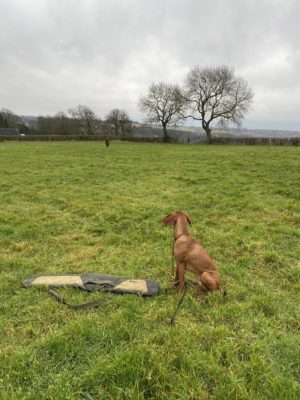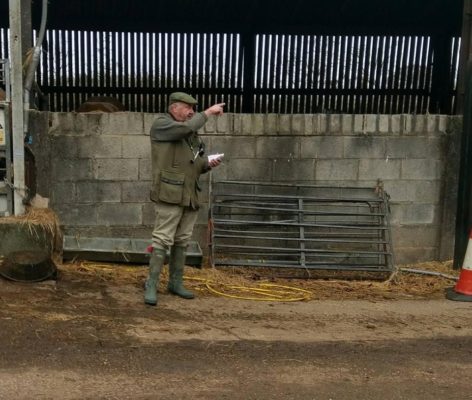We often hear from our owners who are keen to do some sort of additional activity with their dogs but always unsure of what and how?,
When i am asked what I would recommend, my reply is always “you can do it all, working, showing, agility and man trailing. You can go as far as you want or have time for. Training is an expensive behaviour, in terms of time and energy as we have all found when instilling the basics.
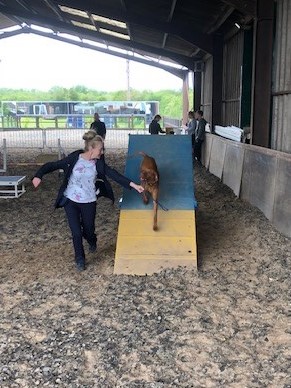
For me however getting out on to the land and seeing my dogs enjoying running, searching and pointing within its natural habitat is what I so love to see.
When anyone starts thinking about taking up beating or shooting, some of us are a little put off by an enduring myth, which is it is cruel to your dog, or you need to be from a particular background or to already know the right people.
This myth is one we’re everyone connected to working your dogs are keen to dispel – as newcomers to the sport soon find, on a shoot you will come across people from all backgrounds and from all walks of life. The one common thread tying them all together being, of course, a passion for the Great Outdoors.
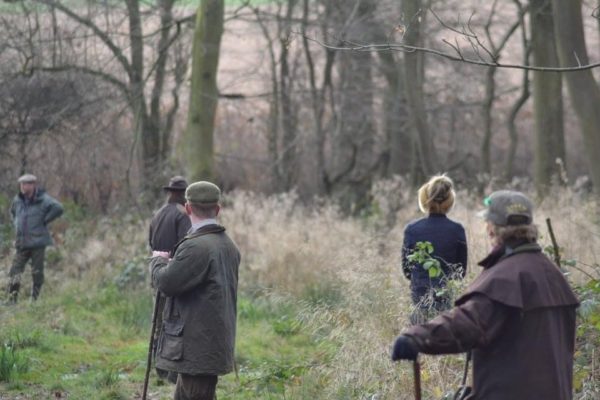
If you are unfamiliar with what beating on a shoot with your dog is, basically a beater is a person who has the job of flushing game such as pheasants or grouse from cover in the direction needed. Their job is to investigate every bit of cover in the wood and flush the birds out using a flag or stick. Correct beating on a shoot is crucial to the success of the day. Sounds simple? Far from it.
A beater is an important part of the whole team and part of the management of the whole day. The beating line needs to move as a team and at the right pace.
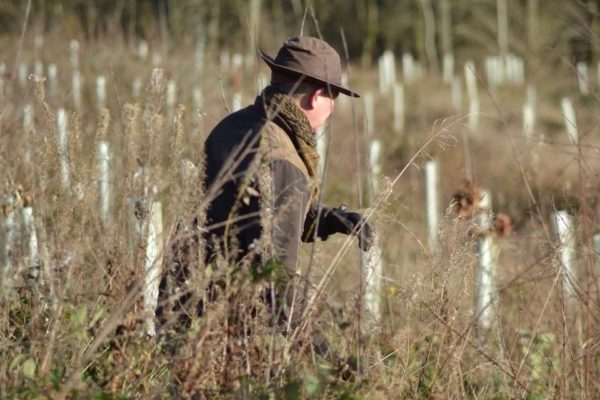
The HPR breeds we see in the UK all originate from continental Europe and although you will very rarely see them in the beating line they are truly a versatile group of dogs used for falconry, deer stalking, picking-up and, of course, rough shooting.
It is fair to say they are not an easy gundog for the novice to train without someone who is experienced with the breed to give help with guidance and a lot of mistakes will be made. Many people think they are only any good for wide-open spaces such as the grouse moors, but I have worked Vizslas very effectively in wooded areas, hedgerows, water meadows and moorland and i have gotten a great deal out of this with all my Vizslas.
Shooting with and over a Vizsla is a different experience from shooting over a spaniel or Labrador. The Vizsla works to find the game, that’s what it loves and I mean it loves. When it’s has found a hiding bird the dog will come on point, any gun within a 100 yards who spots this will then endeavour to approach you from downwind, so as not to spook the quarry. Once in position, the dog will be given the command to flush the bird and this normally happens in quite an explosive way, so you must have your wits about you.
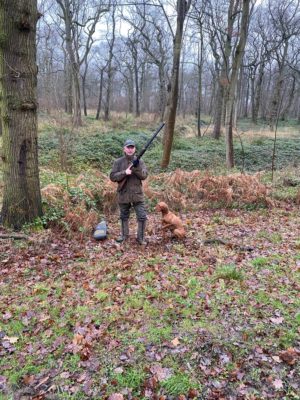
Most game will be flushed away from you and quite often very close, so the gun will want to give it a chance to make some distance before taking a shot – it sounds easy, but believe me it isn’t!. if you are on a beating line with a pointer you will never be short of company as an experienced gun will always stay close to a dog who has proven to be good at pointing. They will be ready, watching closely, waiting for that elusive point and then your instructions. And when it is over, their gratitude is always rewarding when you hear them repeat the action and how well your dog performed to the other guns.
HPR breed traits
When working out on the moors or wide- open arable fields, Vizslas will range anything up to 100m each side of the handler all HPR breeds have their own hunting “traits”. For example, a German shorthaired pointers hunt hard and are extremely fast and so do Vizslas……….
Hungarian Vizsla
We know it is an attractive dog with a long aristocratic history. I have read accounts of them in the 1500’s when an Emperor fed up of hunting bears (With long haired Vizslas) wanted a dog to help track and flush for his hawk. And so, the short haired Vizsla was created to fill that gap …

Many Vizslas are now being worked in the UK, they are natural hunters with an excellent ability. Not only are they great pointers, but they can be excellent retrievers as well. They will retrieve on land and in the water, making the most of their natural instincts and webbed feet. However, they must be trained gently and without harsh commands or strong physical correction, as they can have sensitive temperaments. Vizslas are excellent swimmers, some may need a little motivation to get in the water but as they get used to it, they will love it.
Your Vizsla was born with a set of instinctive behaviours that he inherited from his parents. These behaviours can be grouped into three broad categories – prey, pack, and defence – called drives. How many behaviours a dog has in each drive, will determine his temperament, his personality and how he perceives the world.
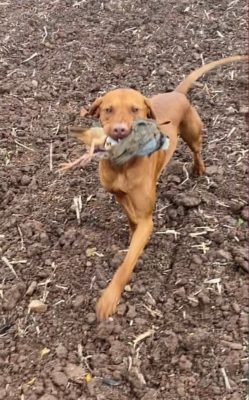
Prey drive includes those inherited behaviours associated with hunting, killing prey, and eating. It is activated by motion, sound, and smell. Behaviours associated with prey drive are seeing, hearing, scenting, tracking, stalking, chasing anything that moves, pouncing, high-pitched barking, jumping up, biting, pulling down, shaking, tearing and ripping apart, carrying, eating, digging and burying.
So what’s the first step
Obedience training is always the first stage in the building blocks of any training. When the dog can sit, stay, lie down on command then you are on your way to train your dog like a pro. The next stage that we want when we are out walking, is for your Vizsla to respond with a good recall to a verbal or whistled command and of cause walk to heel on and off the lead which is the hardest of all to master and so easy for the dog to forget unless you repeat, repeat and repeat more.
We can help with the basics with our day boarding with additional re enforcement that will embed what you are already doing at home. Motivation is the key and patience as well as repetition. Dog training moves at biological speed and is often thought of as character building endeavour. It forces us to slow down from techno speed back down to bio-speed. The rewards for this approach with a great deal of repetition, far out ways the quick results that we often are encouraged to take. Please read Jean Donaldson “How to train your dog” as an award-winning author and professional trainer this is a must read for any owner.
We at AV follow Jeans example and doctrine, which is we get you to do it, not just require the technical know-how but to actually do the leg work. Training is expensive behaviour in terms of time and energy. There is more than one behaviour to train, each one requires many steps and a lot of repetition. The fruits of the labour come, but not immediately
We base all our interactions with any guest on this ethos, our priorities for the dogs are their health, behaviour, companionship, diet, and environment with any training interaction with you or the dog.
There are so many out there who are experts in behaviours, and we recommend you seek these out if you think your best friend has a behaviour you are not comfortable with. Chances are that the dog is ok, and it is the owner who needs the training. However, we all want the best for our companions.
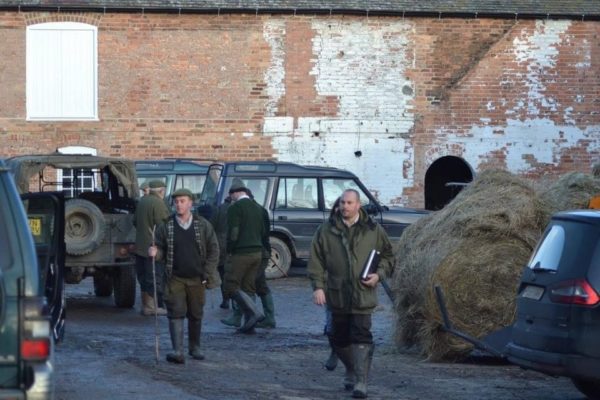
A very popular activity is to work your dog either in field trials or working tests, you can fully take part in either to show of your skills to an audience and judges or perhaps not, this is the ultimate working test for most owners.
However you could like many others, which I include myself within, love nothing more than training our dogs in the summer ready to get out within the months of Aug to Feb to work our dogs on the land for real, whatever the weather, be it in the cold, the wet and on those rare occasions the sunny day. How you prepare for this is how we at AV can help. please contact us for full details.
We will help you prepare you and your dog for a day out on the beat line.
We can reinforce the basics in any day boarding session, this is vitally important if you want to keep on the good side of a game keeper and you want to be invited back to the next working day. A dog who does not comeback when you need it to after sending it forward will ern a reputation you do not want or can afford. We endeavour to instruct the owner the commands and handling advice you require for a successful and trouble-free day in the field with some basic instruction and advice for your big day out.
We have devised a programme that will enable you over the close session to prepare for your days out over the winter season. The itinerary has all the key elements required and you can complete the full package (POA) or just pick and choose the area of improvement you want to focus on, again and again and again.
|
One-to-One Gun owners dog Assessment Session |
First assessment hour is free
After £40 per 1hr session |
Training sessions are aimed at owners first and usually last 1 hour
(£30 per hour over the first hour if needed up to maximum of three hours). First lesson is always an assessment session for any new dog . |
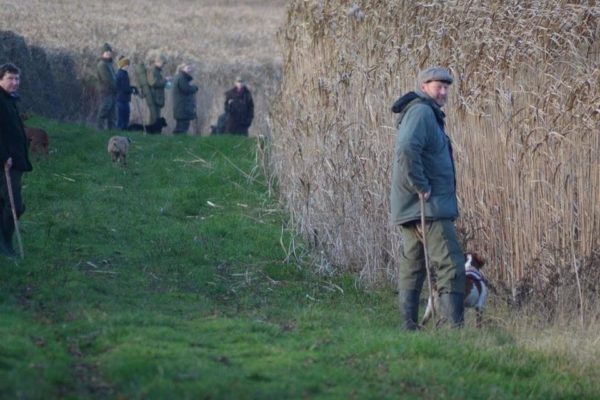
We can start with an individual assessment, We will help you identify and make suggestions on how to keep a Vizsla stimulated both mentally and physically and how to have fun with your dog.
Other areas we will look at are Quiet and steady handling, Dummy work wit memory testing, Control, scent and flush, as well as what to expect on a day out for you.
We have limited places; this is to ensure that each owner gets the most out of the instruction and we do not over work the land we have. The sad fact today is that all shoots require beaters with good steady dogs, and we want you to experience this and enjoy the day with your dog/s, so you come back year after year. Therefore, we have provided this programme to help you through the first year of beating. All dogs must be at least eight months old at the start.
IF you’re ready, and you want a heads up on the day itself the following paragraphs will help
We have tried to use our experience gained over many years to give you some idea as to what to expect and how to ensure your day is a success with tips on what to expect and guidance on what to do you may need.
The invite
So you have a friend who says “it’s OK come along I will ask the keeper, it will be ok we will have a great time and they will give you a drink at lunch, just bring food”. And that’s it, nothing more apart from a time to be there on the day. And then you get a message the keeper says, “bring your dog if you like,”
That has happened so many times, I have lost count. Experience has taught me to make sure I find out what type of shoot it is and what you and your dog will be expected to do. ** Tip (I always keep flags and sticks to hand as you don’t know which you will need on the day).
Then I choose very carefully which one of my dogs are suitable for this day out, whether it is sufficiently trained and under your control for that shoot. If you’re a first timer new to beating or an old hand when on any shoot for the first time, err on the cautious side until you have gained local knowledge about the terrain and who you are working with. As many beaters on one shoot are also gamekeepers/ farmers who run their own shoots on another.
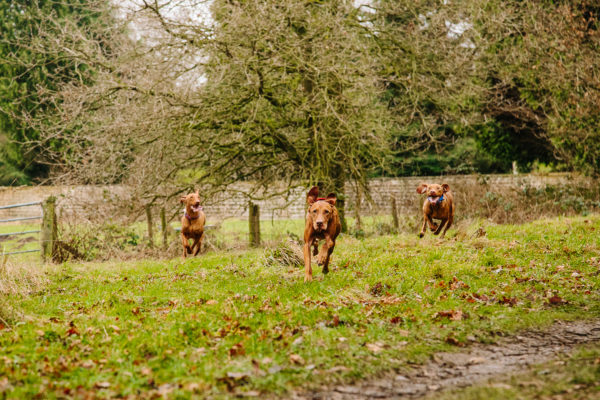
The first timer
The first shoot I took my Vizsla on I kept her on lead for much of the time as it had a mixture of ploughed land with huge fields of beet and potatoes with some wooded areas in between. The Guns would be positioned on the far side with a gamekeeper and a walking Gun on each flank. It was usual for all game to be retrieved as it was shot, this is normally behind the guns with a line of picker-ups with dogs, however the dogs on the beat line had lots of chances to pick up as well.
* Guidance note (Within the programme we talk about keeping the dog steady).
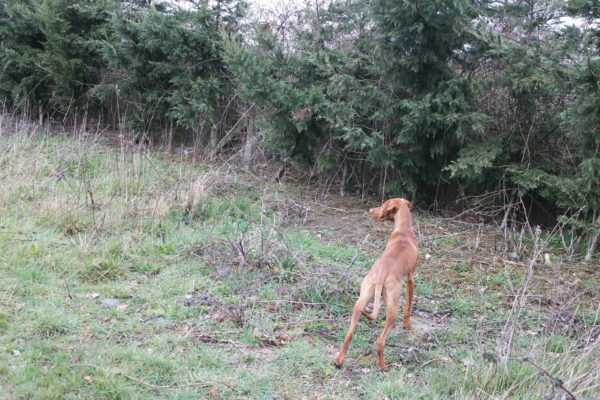
As the day progresses you will often find the gamekeeper pushing the game from the open ground into the woodland. The wooded area are sometimes also used as pen areas where all the reared birds had been released. This brings the density of game to a high. Approaching these flushing points with hundreds of birds packed together at the end of the drive through the main coverts has its dangers.
As it soon became a free-for all as the beat line moves towards the guns through the wooded area, some of the dogs would chase the quarry far into the distance, pushing up birds far to early much to the horror of the shoot captain, In retrospect I should not have taken the dog I had, she was young and it spoiled her steadiness – as she wanted to chase with the rest, she spent most of that day on lead.
This is something to consider when you take your dog into a beating line with walking Guns, or where game is being shot in full view.
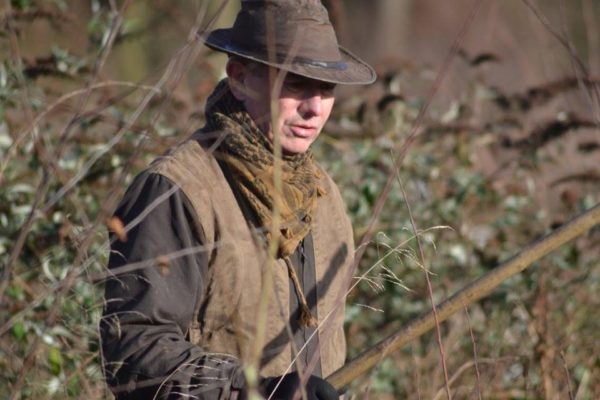
** Tip… I find it helpful when introducing a new dog to a shoot to volunteer to beat out or blank-in any ditches or rough cover on the way to the main beat. This gives you the chance to make sure you are under full control before the main beating line is started in earnest.
The keeper has a responsibility to provide to the guns with a minimum number of birds for each day and if they have all gone up at the wrong time he will be as mad as hell. The guns pay an extraordinary amount of money to be there, so any bad behaving and uncontrolled dogs, those owners tend not to be re invited ever again.
Keep your dog at heel
At certain points and in the day probably not obvious to us the beaters the keeper would tell us to get our dogs to heel, if we neared a wood or close to another drive. Drives often cross over as we push the birds across the land and we often find we are walking through a drive we would be using later in the day. Any dog running around exploring the hedge of into a wood which you would normally encourage is too late to get under control. Resulting in some of the older dogs pulling far to forward and a multi-flush of birds.

You soon learned to be one step ahead and slip a lead over your dog’s head well before the order from the keeper came. If your dog is under control, then it cannot get into trouble and a lead is the safest option in the densest cover.
* Guidance note. Remember always side towards caution if you do not know the land or the drives With more knowledge of the drives you will be able to make sure that your dog under control well before you have reached the danger points.
Using the wind direction to work your dog effectively.
As we have previously said a Vizsla can and does range wide on a drive and the importance of you understanding how the wind direction can affect your dog is important to you and the gamekeeper
Wind direction plays an important part when driving birds towards the waiting Guns. The keeper will be aware of this and the pegs (Guns) will be located to the best advantage, so that shooting is enjoyed by all. This often means that dogs will be working downwind for much of the time. as a result, on a downwind beat the dog should pull out left or right and then quarter back towards you, and only once that ground has been covered should you move forward to a fresh piece. Of course, in the beating line it is not possible for you to pause while your dog works the wind and therefore the dog is encouraged to keep pulling forward, when tracking game. This will quickly ruin a dog’s pattern, and instead it will learn to inadvertently to “pull” with the result that ground will not be covered properly and game will be passed. Do not allow your dog to pull downwind — bring it back to heel and only let it hunt when you can keep control.
The unexpected
Although my 7-year-old Vizsla, is obedient during training and very focused when hunting she can switch to throwing a def ear and become what observers would call ‘misbehaving when in front of the beating line’. Vizslas range wide left and right but with spaniels and Labradors this does not happen. So when the drive is in full formation, and everyone is blowing a whistle trying to control their own dogs, and with all the shouting, tapping and waving, she would soon switched off her ears and her prey drive took over and i would soon lose her to the birds if i was not watching her every move.
* Guidance note. The problem I had was caused well before we joined our first beat, I had never put her into a situation with other dogs and beaters the cracking their flags or shouting strange language to scare the birds.
She has a fantastic natural talent but was not used to this aspect. She had not been among high densities of game flying forwards or over her. So, with my other dogs I now make sure I introduce them to these things before I take them out beating.
Think it through and make sure you cover anything that might cause the dog not to behave the way you want it to. Another example I have is when the beat has to move to the next location in a tractor and trailer as is the norm, sometimes enclosed or sometimes completely open. What’s the problem with that?,
Nothing until it is swapped to a small ex military 4×4 to get down into a valley. A beating wagon designed four 8 people in the back with two up front. Now put 12 people in the back with 10 dogs all on top of each other, the only way to get to the next start line.
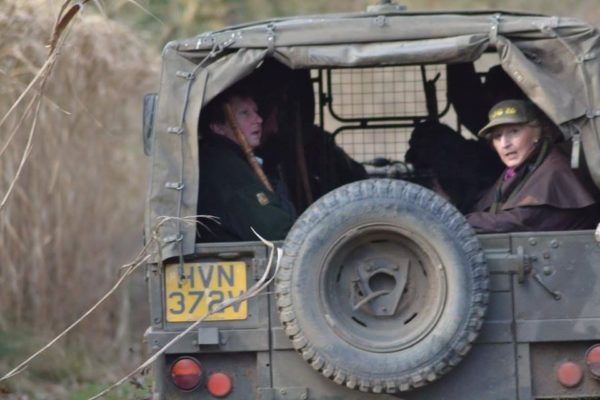
If your dog is not comfortable in hitching ride with other dogs, it can be stressful for everyone and your dog, and as it is a long walk for you and the dog its one you will need to practice. We did make it but with a lot of ouches and Arrs along the way as they drove over every pothole on the track, but fun times.
Your etiquette is as important as the dog’s performance is on the day
So how to get re-invited beating on a shoot day, it is simple, follow the directions you are given and don’t decide that you know better than the gamekeeper or shoot captain.
The following is taken from an article in a recent publication of the shooting times, I make no apologies as it lays out a great many of the does and don’ts that we all need to follow. I have used this with a few changes of my own.
- If a shot Captain a gamekeeper or a beat leader ask you to do something new on a shoot you should never reply: “The last keeper here never did it like this” or “we don’t normally do it that way.” They have you’re safety, the dogs safety and the guns safety uppermost in mind and beaters need to follow directions if they are to play a safe useful role. Otherwise you may as well go home.
- Listen carefully and obey instructions. Most keepers use radiomen, in the military they are section leaders important in the command and control of any unit, they are there in the line to pass vital information and guidance from the person who has overall view of how the birds are moving. He will direct all the different parts of the beat which should be followed precisely. Sometimes the information will need passing quickly, clearly and quietly from one beater to the next.
- In the military you need to march in a straight line, they make it look easy, it is not, and that is why some beaters seem to find walking in a straight line difficult. ** Best tip is just keep looking to check you can see the person to the right or left, if you are constantly checking you’ll be there… sometimes a message is to stop and you will not get passed it and if you keep marching forward you will find yourself being shouted at to stop, resulting in a bit of banter thrown at you, it pays to keep in that line.
- When it comes to high maize cover crops you can ask your next-door neighbours to keep calling out or use a flag to identify their position or you can ask where they are, you adjust your position accordingly.
- Most beats do cut a path through big patches of bramble for you, they know all to well what it’s like if it is not. They don’t send you through it just to see who comes out with their leggings ripped the most. However, when it’s not some beaters will take an easy route around (its human nature) PLEASE TRY NOT TO, Use your stick to beat a path through brambles – don’t walk around them or you will miss the birds.
- Do whatever job you are asked. Which might be going on the end of a gunline as a stop, or carrying game back to the game cart or standing with a novice Gun, if you’re experienced. A good beater will be flexible. Just be prepared to be asked to hang game in the larder or asked to open and close farm gates for the trucks or fellow beaters it is a team day and we all need to play our part.
- Please be on time. and always be reliable. Beaters need to be punctual, arriving at the allotted hour and be ready to go as soon as they reach the meeting place. Always let the gamekeeper know weeks in advance which shoots you can make, and those you can’t. This gives him (or her) time to find a replacement.
- Do not assume your dog will be welcome on every shoot! Even if you think your gundog is beautifully trained do not just turn up with him without asking. If a keeper stipulates ‘no dogs in the beating line’ it is generally because he doesn’t require dogs for the drives he is doing. A badly trained dog can easily ruin a drive (or entire day for that matter!) but once a keeper can see that you understand how his day works he may be more willing to let you bring your dog at a future
- Wear the right clothes for the day’s weather sounds obvious but Check the forecast. Layers are good. And added leg protection (Perch Wax Treggings) for the cursed brambles and hawthorn You can always take a layer off if you are too warm.
- The shoot may not provide lunch so check in advance and bring a packed lunch if necessary.

- Lastly please remember that the keeper and the shoot captain will have eyes in the back of their heads, they see everything and hear everything that goes on!…. Your goal should be to prove that you are a valuable, reliable member of the beating team with or without your dog.
We trust you found all the above informative and helps you to choose to join us on any of the beat lines throughout the UK. One thing is for sure you will get plenty of fresh air, loads of exercise, you will get cold and wet, you will meet great friends, and have memorable times, you will share loads of stories about your dog and most of all, you will have loads of fun,
See you soon


